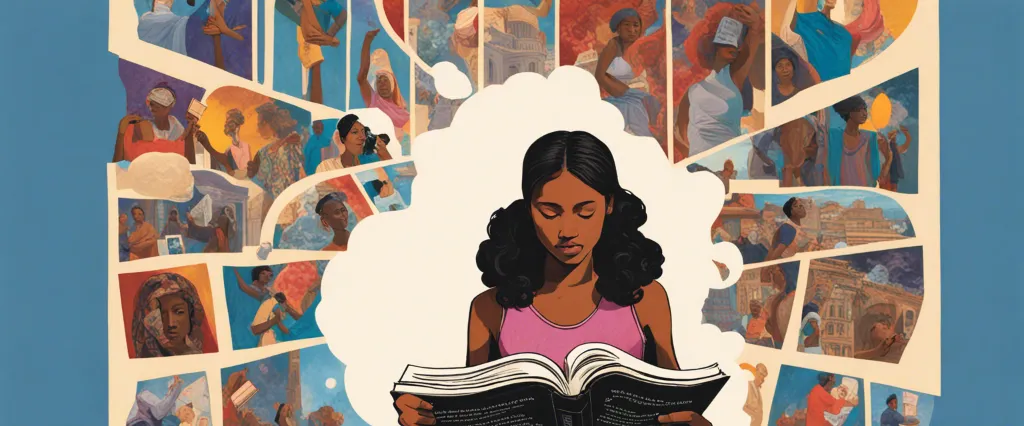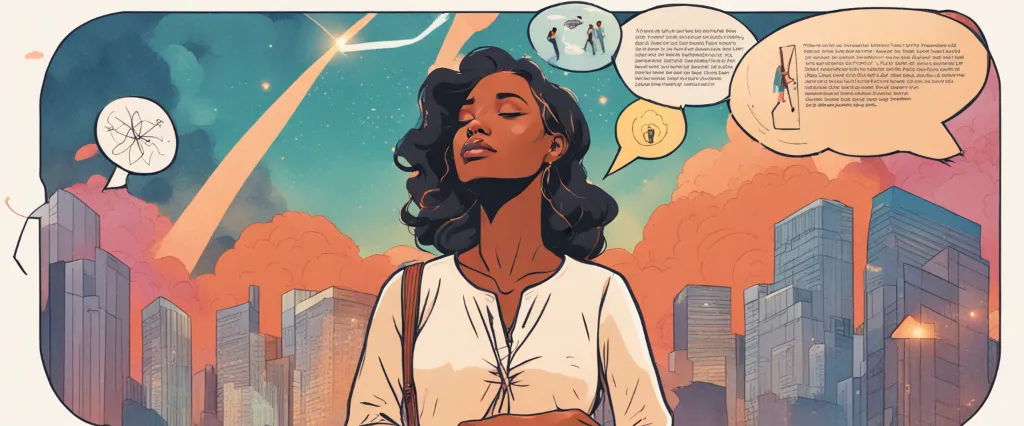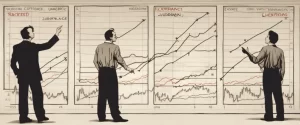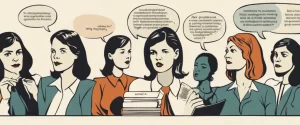——Half the Sky by Nicholas D. Kristof & The Mother of All Questions by Rebecca Solnit

The written word has long served as a conduit for shedding light on marginalized narratives, whispering the veiled stories of those who have been rendered voiceless by society. Nicholas D. Kristof’s groundbreaking “Half the Sky” and Rebecca Solnit’s thought-provoking “The Mother of All Questions” both stand as testaments to this timeless power of literature, offering profound insights into the oppression and liberation of women across the globe.
Within the realm of feminist literature, these two seminal works come forth as luminary voices, embodying distinct perspectives while sharing a collective goal of driving social change. Kristof’s “Half the Sky” exposes the harrowing realities faced by women worldwide, shedding light on issues ranging from sex trafficking and forced labor to maternal mortality and gender-based violence. On the other hand, Solnit’s “The Mother of All Questions” delves into the intricacies of a patriarchal society, challenging conventional notions of femininity, and unraveling the nuances of women’s experiences in a world dominated by male narratives.
Through this comparative study, we will explore the convergences and divergences within these two literary works, analyzing the multifaceted challenges confronted by women and the transformative potential ignited by their unwavering resilience. By examining how Kristof and Solnit navigate the intersectionality of gender, class, and race, we hope to uncover the nuanced and interwoven threads that form the fabric of female oppression, as well as the transformative strategies nurtured to pave the path towards empowerment.
Chapter by chapter, “Half the Sky” engulfs its readers in heart-wrenching stories that illuminate the plight of women worldwide, weaving together accounts of suffering, survival, and resilience. The disarming honesty it evokes in portraying global gender inequality has revitalized the international feminist movement, urging readers to confront the realities often shielded by complacency. On the other hand, “The Mother of All Questions” challenges ingrained assumptions and interrogates the patriarchy that perpetuates systemic sexism. Solnit dismantles conventional gender roles with her piercing analysis, dissecting society’s expectations of womanhood, and seeking to redefine the parameters of freedom for women.
In order to comprehensively examine the strengths and weaknesses of each book, we will explore their thematic preoccupations, narrative approaches, and the historical context in which they were written. Additionally, we will assess the efficacy of their persuasive arguments, the balance struck between personal anecdotes and sociopolitical analysis, and the manner in which these texts ignite critical dialogue. Through this exploration, we aim to highlight the potential for societal transformation that lies dormant within the pages of these two influential works.
By juxtaposing these two revolutionary texts, this comparative study strives to illuminate the complex tapestry of feminist discourse, revealing narratives of pain, resistance, and potentiality that echo across cultures and generations. As we embark on this journey, let us delve into the pages of “Half the Sky” and “The Mother of All Questions,” opening our hearts and minds to the stories that reverberate within, and ultimately uncovering the substratum of hope that ignites the pursuit of justice and equality.
Brief Summary of Two Books
Half the Sky by Nicholas D. Kristof
Half the Sky: Turning Oppression into Opportunity for Women Worldwide” is a book authored by Nicholas D. Kristof and Sheryl WuDunn. The book explores various forms of oppression and discrimination faced by women around the world, while also highlighting inspiring stories of women who have overcome these challenges.
Kristof and WuDunn, both Pulitzer Prize-winning journalists, provide a comprehensive analysis of gender inequality across different countries and cultures. They delve into topics like sex trafficking, forced prostitution, female genital mutilation, maternal mortality, and lack of access to education and healthcare. The authors argue that the mistreatment of women is not only a violation of human rights but also a hindrance to global development and progress.
The book showcases real-life stories of courageous women from Africa, Asia, and the Middle East who have endured unthinkable hardships. From Saima, a Nepali girl sold into sexual slavery, to Prudence, a young Rwandan genocide survivor who rebuilt her life, these narratives shed light on the resilience and strength of women in the face of extreme adversity.
Additionally, Kristof and WuDunn discuss the importance of grassroots organizations, NGOs, and individual activism in combatting gender-based oppression. They highlight successful initiatives that have made a tangible impact in empowering women and promoting gender equality, such as microfinance programs and campaigns against female genital mutilation.
“Half the Sky” seeks to raise awareness about the injustices faced by women worldwide and inspire readers to take action. The authors argue that empowering women is not just a matter of morality, but also an essential step towards addressing many global challenges, including poverty, disease, and political instability.
Overall, the book serves as a call to action, stressing the urgency of ensuring equal rights and opportunities for women everywhere. It combines powerful storytelling with comprehensive research to illustrate the potential for positive change when societies invest in the well-being and empowerment of women.
The Mother of All Questions by Rebecca Solnit
“The Mother of All Questions” by Rebecca Solnit is a collection of essays that explores various issues related to gender, feminism, and women’s experiences in society. The book covers a wide range of topics, from violence against women to the complexities of silence and the importance of finding your voice. Solnit delves into the cultural expectations placed on women, the ways in which women are marginalized or silenced, and the power dynamics at play in our society. Through her thought-provoking analysis and personal reflections, Solnit challenges traditional conceptions of gender and advocates for a more equitable world for all.
Comparison between Two Books

Similarities in Social Documentary
Both “Half the Sky” by Nicholas D. Kristof and “The Mother of All Questions” by Rebecca Solnit are social documentaries that aim to shed light on important issues in society. Although the books focus on different topics – “Half the Sky” on gender inequality and women’s rights, and “The Mother of All Questions” on feminism and the silencing of women – there are several similarities in their portrayal of social realities.
1. Exposing deep-rooted societal issues: Both books delve into the deep-rooted societal issues that contribute to the oppression and marginalization of women. They explore the existing patriarchal structures, cultural norms, and power dynamics that perpetuate gender inequality.
2. Employing personal narratives: Both authors share compelling personal stories and anecdotes to humanize the issues they address. By bringing forth individual experiences and giving voice to the marginalized, they aim to create empathy and understanding among readers.
3. Wide range of voices: Both books make a conscious effort to elevate various voices and perspectives, giving significant attention to the voices of women themselves. By incorporating interviews, testimonies, and stories from different backgrounds, Kristof and Solnit amplify the variety of experiences and highlight the universality of these issues.
4. Intersectionality: Both books recognize the intersecting identities and experiences of women, acknowledging that gender inequality intersects with factors such as race, class, and sexuality. They emphasize the importance of understanding how different forms of oppression intersect to create compounded injustices.
5. Multi-dimensional approach: Neither book solely focuses on the problems at hand; they also explore potential solutions and highlight the resilience and strength of the women involved. They provide a nuanced analysis of the issues, acknowledging progress while simultaneously urging society to take further action.
6. Advocacy and call to action: Both books go beyond documentation and aim to inspire readers to become advocates for change. They offer suggestions on how individuals can take action, support organizations working in these areas, and bring about meaningful transformation.
In summary, both “Half the Sky” and “The Mother of All Questions” share similarities in their approach to social documentary by exposing entrenched issues, utilizing personal narratives, incorporating diverse voices, acknowledging intersectionality, employing a multi-dimensional analysis, and motivating readers to take action.
Divergences in Social Documentary
Half the Sky by Nicholas D. Kristof and The Mother of All Questions by Rebecca Solnit are both powerful works that address pressing social issues and advocate for gender equality. While they share a similar aim, there are notable divergences in their approach to social documentary.
In Half the Sky, Kristof and his co-author, Sheryl WuDunn, employ a more journalistic and investigative style to tell the stories of women from around the world who have faced extreme adversity. They travel to various countries, documenting firsthand accounts of gender-based violence, human trafficking, and maternal mortality. Kristof and WuDunn provide facts and statistics alongside individual stories, creating a sense of urgency for societal change. Their focus on real-life experiences highlights the dire circumstances faced by women and girls, amplifying the need for global action.
On the other hand, The Mother of All Questions by Solnit takes a more analytical and introspective approach. Solnit delves into the cultural and ideological aspects that perpetuate gender inequality, examining the ways in which women are silenced and marginalized in various domains of life. She critically reflects on social norms and structures that suppress women’s voices and presents insightful analysis of systemic issues. While Solnit incorporates anecdotes and personal experiences, her primary focus is on dissecting the underlying causes of gender inequality to provoke thought and awareness.
Another key divergence can be found in the scope of these two works. Half the Sky concentrates on international women’s rights issues, shedding light on the struggles faced by women in developing countries. It emphasizes the role of individual and collective action in addressing these challenges. The book showcases grassroots movements, nonprofit organizations, and innovative solutions that are making a difference on the ground. By highlighting specific regions and cases, Half the Sky aims to mobilize readers to take action and support these causes.
In contrast, The Mother of All Questions focuses mainly on the Western world, examining gender inequality in developed societies from a feminist perspective. Solnit delves into subjects like mansplaining, rape culture, and the gender pay gap while encouraging readers to question and challenge these deeply ingrained biases. Rather than presenting a comprehensive overview of global issues, Solnit’s work delves into the complexities of gender dynamics within a specific cultural context, driving readers to critically analyze their own surroundings.
In summary, both Half the Sky and The Mother of All Questions are essential contributions to the discourse on gender inequality. While Half the Sky takes a more journalistic and global approach, highlighting real-life stories to inspire action, The Mother of All Questions adopts a more introspective and culturally focused lens to explore the underlying causes of gender oppression. Both approaches complement each other, offering different perspectives on the urgency and depth of societal change needed to achieve gender equality.

Conclusion
Both Half the Sky by Nicholas D. Kristof and The Mother of All Questions by Rebecca Solnit are highly regarded and powerful books that tackle important social issues. Therefore, determining which book is more worthy of reading may depend on your personal interests and preferences.
Half the Sky focuses on the oppression of women and girls around the world, discussing topics such as sex trafficking, gender-based violence, and lack of access to education and healthcare. It explores the resilience and bravery of women who have overcome these challenges and offers potential solutions to address the issues they face. This book provides readers with a deep understanding of the global struggle for women’s rights and the urgent need for change.
On the other hand, The Mother of All Questions delves into the complexities of gender dynamics and tackles various issues, including feminism, intersectionality, and the silencing of women’s voices. It addresses cultural norms and expectations that limit women’s opportunities for full participation in society. Solnit provides thought-provoking insights and questions societal norms to encourage dialogue and change.
Ultimately, both books offer valuable perspectives on gender inequality and the struggles faced by women worldwide. It may be helpful to read reviews or summaries of each book to determine which one resonates more with your interests and the specific issues you are most passionate about.



